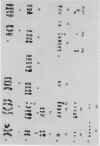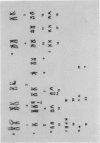Abstract
The non-Hodgkin's lymphomata are characteristically near diploid with occasional examples having higher chromosome numbers. In contrast, about half the cases of Hodgkin's disease have chromosome numbers in the triploid range. Karyotypes in cases of Hodgkin's disease appear to be more deranged than those found in other lymphomata, even when the cells are in the diploid range. If karyotypically normal cells in the tumours represent some degree of host reaction, then this is most marked in Hodgkin's disease. Long arm deletions of chromosome 18 were identified in cells from 7/31 cases of non-Hodgkin's lymphoma; 5 were follicular and 2 contained both follicular and diffuse areas. The cases showing this deletion had a relatively good prognosis.
Full text
PDF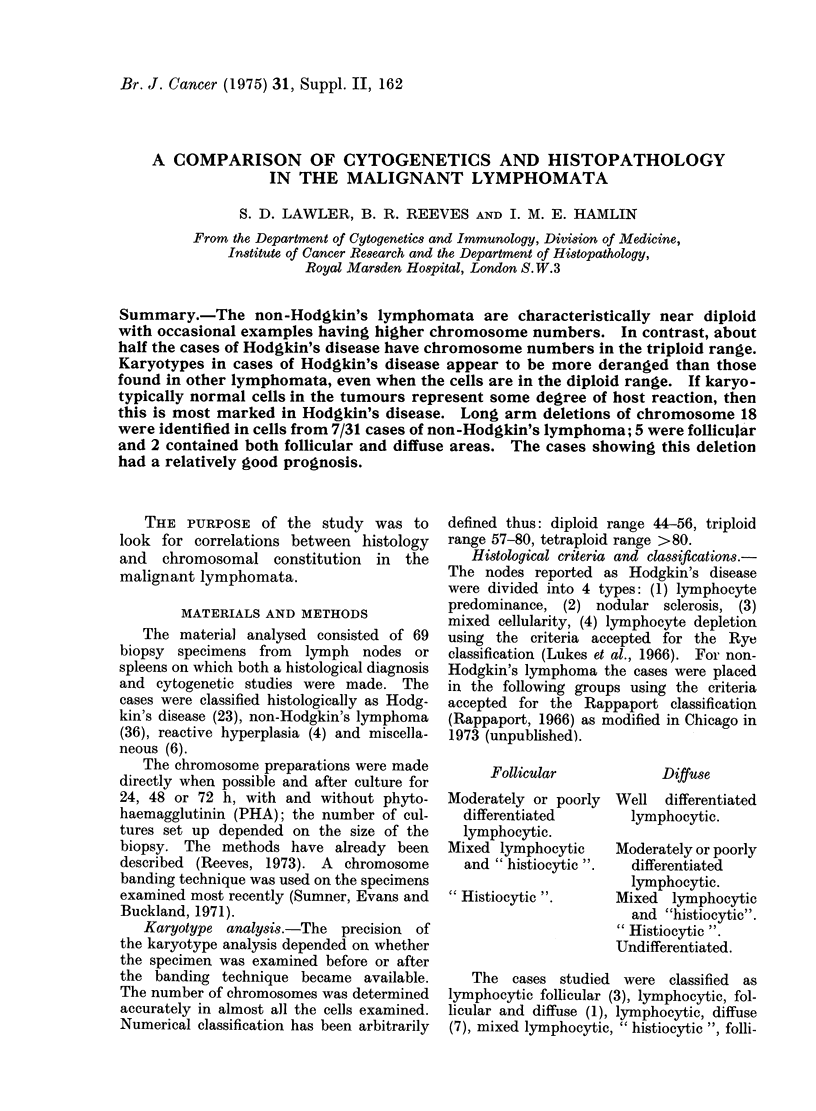
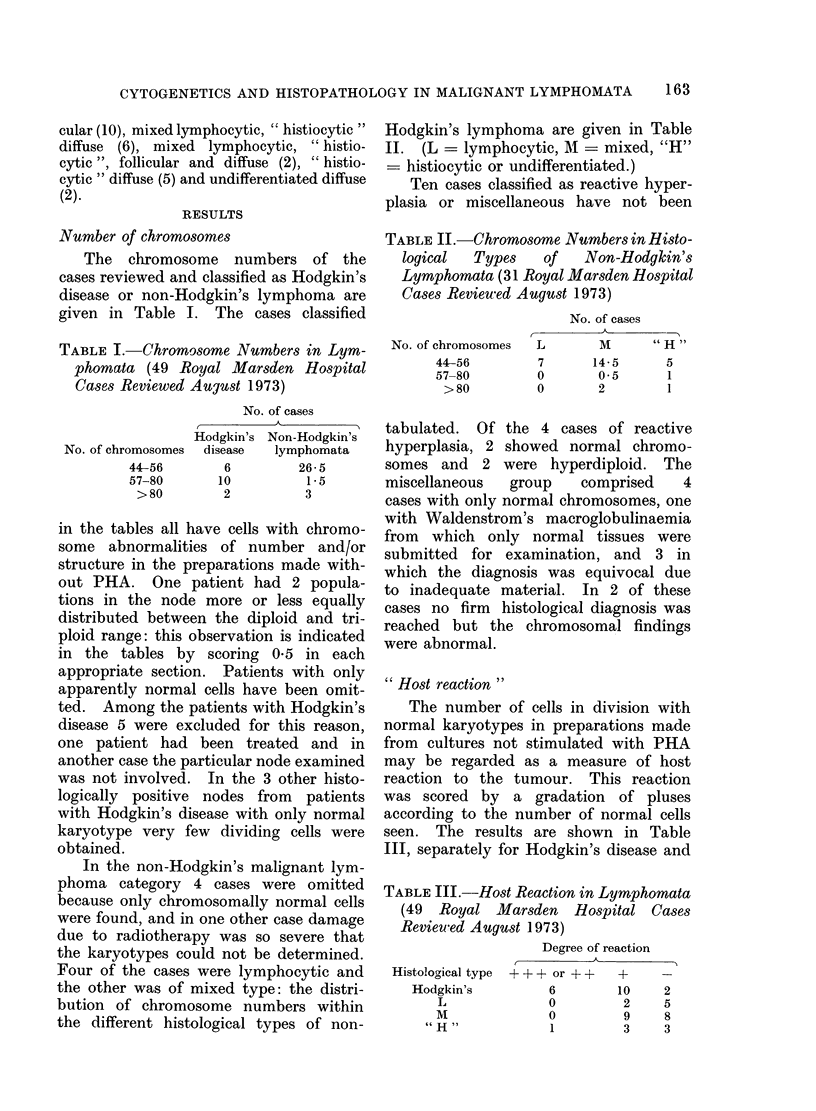
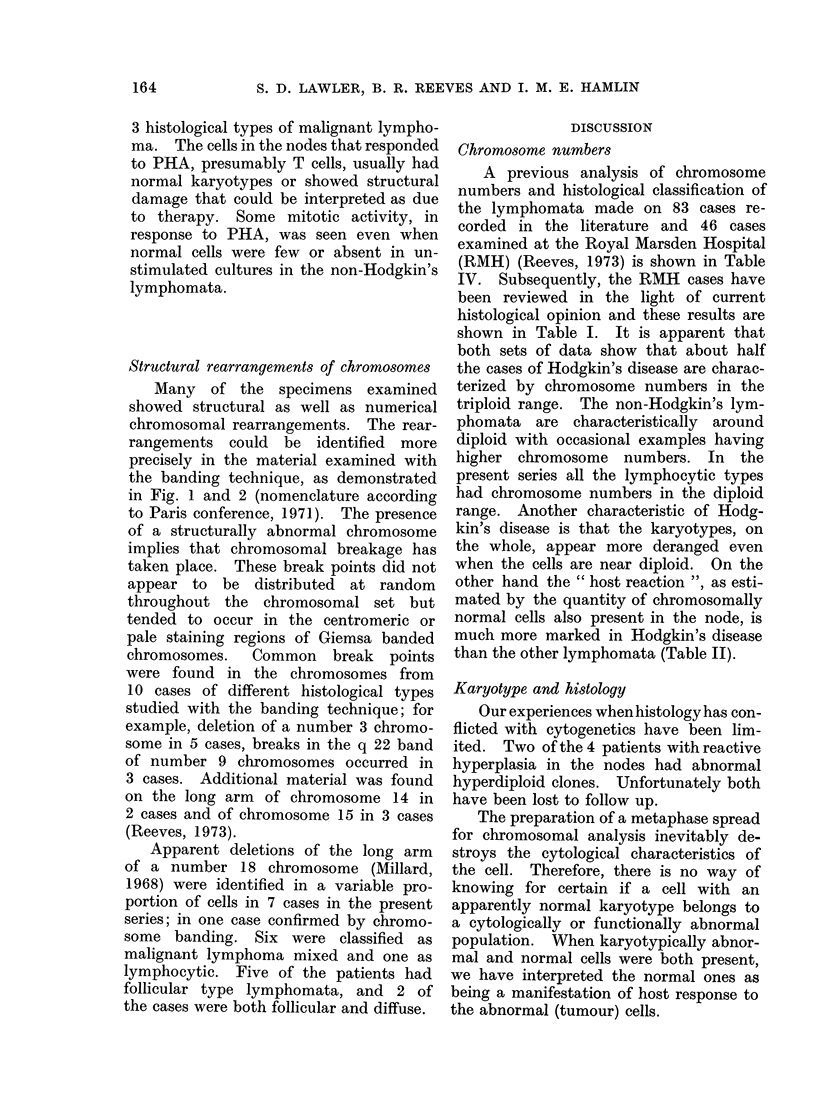
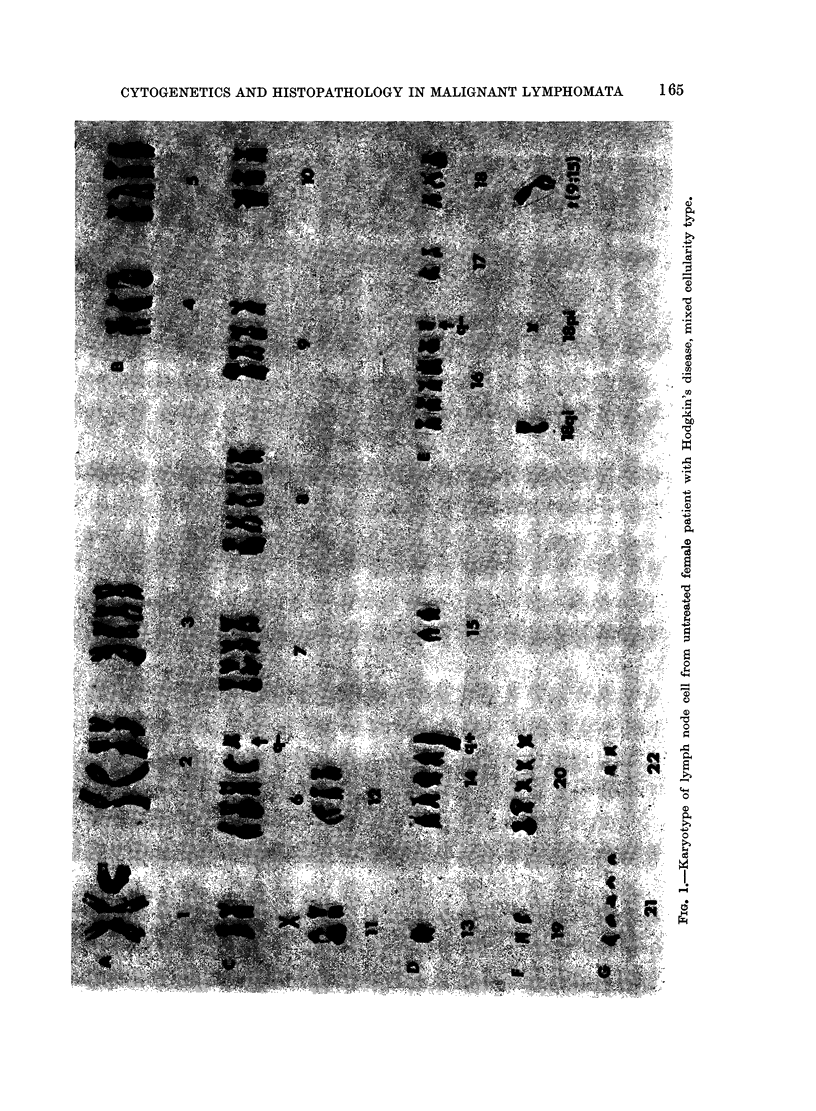
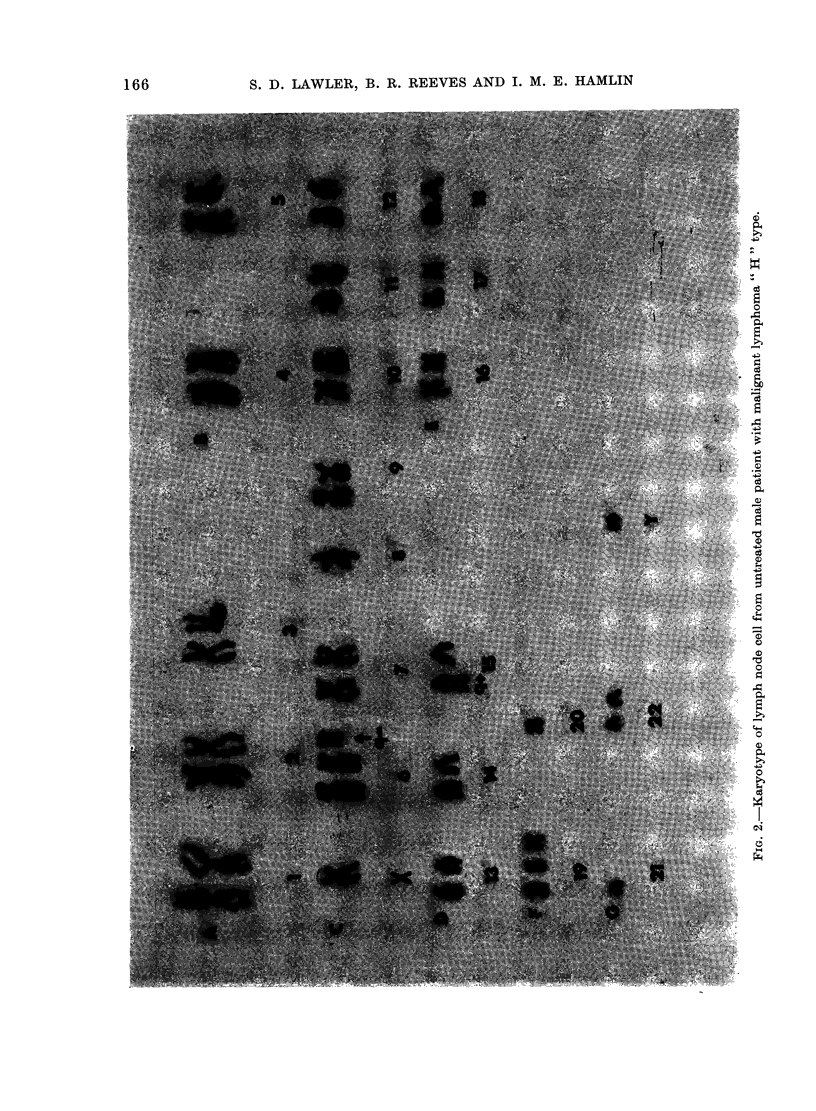
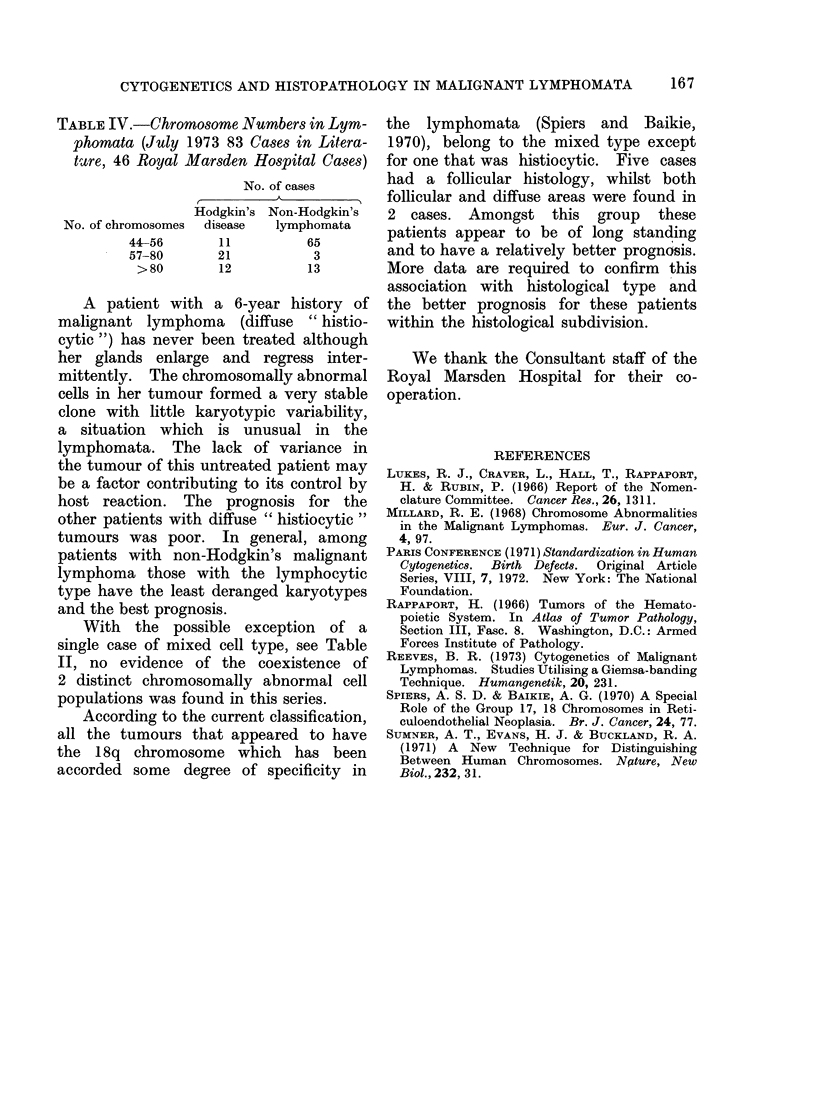
Images in this article
Selected References
These references are in PubMed. This may not be the complete list of references from this article.
- Reeves B. R. Cytogenetics of malignant lymphomas. Studies utilising a Giemsa-banding technique. Humangenetik. 1973 Dec 10;20(3):231–250. doi: 10.1007/BF00385735. [DOI] [PubMed] [Google Scholar]
- Spiers A. S., Baikie A. G. A special role of the group 17,18 chromosomes in reticuloendothelial neoplasia. Br J Cancer. 1970 Mar;24(1):77–91. doi: 10.1038/bjc.1970.11. [DOI] [PMC free article] [PubMed] [Google Scholar]



